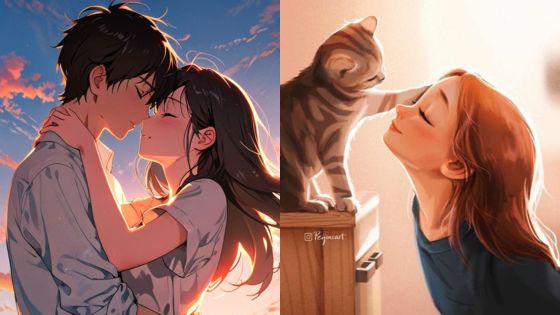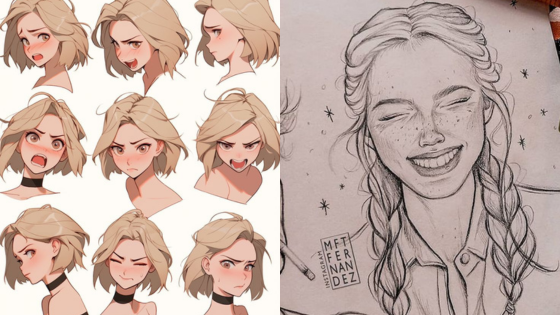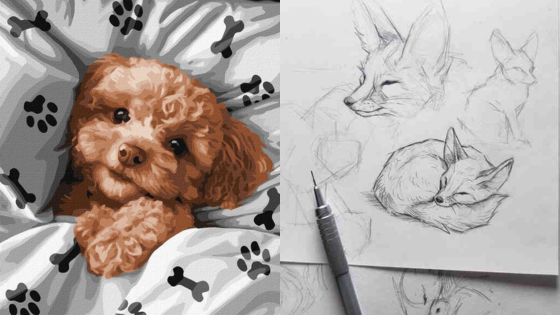Unleashing your imagination through fantasy drawing allows you to create magical worlds limited only by your creativity. By mastering key techniques and developing your unique style, you can transform your visions into captivating artwork. This journey of artistic expression not only enhances your skills but also opens up new realms of possibility in your creative endeavors.
Fantasy drawing is accessible to all, whether you are a beginner or an experienced artist. With the right guidance, you can explore fundamentals and find inspiration in sketchbooks, enchanting landscapes, and more. Engaging with these elements will help you convey the magic that resides within your imagination.
As you embark on this artistic adventure, remember that practice and exploration are essential. Your ability to express complex ideas through visual art will grow as you refine your techniques and showcase your creations. There’s a world waiting to be drawn; all you need is the courage to bring it to life.



Key Takeaways
- Explore foundational techniques to enrich your fantasy art.
- Develop your sketchbook as a canvas for imagination.
- Showcase your unique creations and discover new landscapes.
Fundamentals of Fantasy Drawing
In fantasy drawing, solid techniques can help you create immersive and captivating visuals. Understanding composition and visual storytelling enhances your work, while mastering lines, shapes, and texture gives it depth and character.
Understanding Composition and Visual Storytelling
Composition is crucial in guiding viewers’ eyes through your artwork. Start by using the rule of thirds, dividing your canvas into a grid to position focal points effectively. Pay attention to balance, ensuring elements are distributed evenly.
Visual storytelling is about conveying emotions and narratives through your artwork. Incorporate foreground, midground, and background layers to add depth. Consider using diagonal lines to create a sense of movement, drawing the viewer’s attention towards key elements, and telling a story through the arrangement of characters and landscapes.



Mastering Lines, Shapes, and Texture
Lines form the backbone of your drawings, influencing mood and style. Experiment with varying line weights; bold lines often imply strength, while softer, thinner lines can suggest delicacy.
Shapes create the foundation of your characters and environments. Use geometric shapes for structure and organic forms for fluidity. Texture adds richness; employ techniques such as cross-hatching or stippling to create contrast and dimension.
Combine these elements to develop a unique style that reflects your vision while enhancing the magical quality of your fantasy art.



Developing Your Sketchbook
A sketchbook serves as a vital tool for harnessing your creativity. By focusing on specific techniques and themes, you can fill your pages with imaginative designs and unique creatures that define your fantasy worlds.
Sketching Technique and Organic Shapes
Emphasize fluidity in your sketches by exploring organic shapes. These shapes reflect the natural forms found in nature and can inspire your fantastical designs. Start with simple lines and curves to create dynamic compositions.
Use gesture drawing to capture movement and energy. This technique helps in developing your hand-eye coordination and keeps your sketches lively.
Experiment with different materials such as graphite, colored pencils, or ink. Varying your medium can lead to unexpected results, enhancing your fantasy theme.
Consider creating quick studies of plants, animals, and landscapes, then adapt those designs into your fantasy worlds. This practice fosters creativity while connecting you to real-world textures and forms.
Incorporating Fantastical and Mythical Creatures
To bring life to your sketches, dive into the realm of mythical creatures. Research various cultures’ folklore and legends for inspiration, blending elements from them to create unique beings.
Focus on distinct features that make your creatures stand out. Experiment with body structures, colors, and expressions. For instance, a dragon might have the body of a lizard but the wings of a butterfly.
Consider adding magical elements, such as phosphorescent scales or crystalline horns. These details add depth to your designs and are crucial for drawing fantasy worlds.
Dedicate a section of your sketchbook to character studies. Develop backstories and personalities for your creatures, allowing them to evolve visually and narratively as you refine your sketches.
This approach not only hones your drawing skills but also enriches the imaginative landscape of your artwork.



Creating Enchanting Fantasy Landscapes
Crafting fantasy landscapes involves blending natural elements with imaginative features. You can create environments that captivate viewers and bring your magical worlds to life. Consider the inhabitants that dwell within these settings for added richness.
Drawing Fantasy Landscapes and Their Inhabitants
When drawing fantasy landscapes, begin by conceptualizing the environment. Think about the terrain: mountains, forests, and rivers. Sketch a horizon line to establish depth, allowing for varied elevation in your artwork.
Incorporate inhabitants like dragons, elves, and unicorns to give your landscapes personality. Place them strategically to show interaction with their surroundings. For example, a dragon could soar over a castle or elves might inhabit a lush glade. Use scale to ensure these characters blend harmoniously within the scenery.
Crafting Depth and Intricate Details
Depth in your landscapes creates a more immersive experience. Use overlapping shapes to suggest the layers of the land. Warm colors can come forward while cool colors recede, helping to establish distance.
Adding intricate details enhances the visual interest. Focus on elements such as textures of tree bark or the sparkle of water. Consider using fine lines for delicate foliage. Shadows play an important role as they provide dimension. Don’t forget about atmospheric effects like fog or subtle lighting to further enrich your landscapes.
These techniques combined will result in visually captivating environments filled with imagination and life.



Showcasing Your Fantasy Art
To effectively showcase your fantasy art, focus on developing a unique style and color palette that reflect your vision. Additionally, leveraging social media can provide you with exposure and valuable feedback from your audience.
Developing a Unique Style and Color Palette
Creating a unique style is essential in fantasy art. Analyze different artists to identify what resonates with you, then combine elements to form your own aesthetic. Experiment with various techniques, such as line work, shading, and texture, to see what suits your voice.
Select a color palette that enhances your theme. Consider using tools like Adobe Color or Coolors to find complementary colors. Limit your palette to three or four primary colors to maintain coherence. This strategy can create a more unified piece, allowing your artwork to reflect a specific mood or atmosphere.
Leveraging Social Media for Exposure and Feedback
Social media platforms are powerful tools for artists. Use sites like Instagram, Twitter, and DeviantArt to share your work. Engaging with communities interested in fantasy art will help you connect with like-minded individuals.
Post regularly to keep your audience engaged. Utilize relevant hashtags such as #FantasyArt or #DigitalPainting to increase visibility. Encourage feedback by asking questions or creating polls. Interacting with your followers can lead to constructive critiques and even collaborations, expanding your reach and improving your craft.
- 2.1Kshares
- Facebook0
- Pinterest2.1K
- Twitter0
- Reddit0


